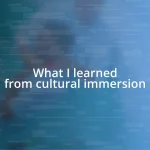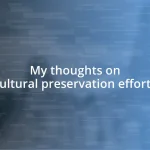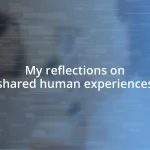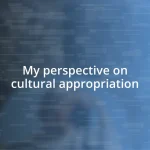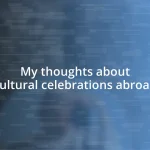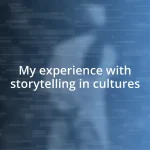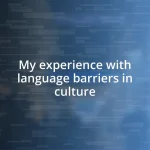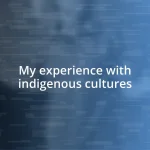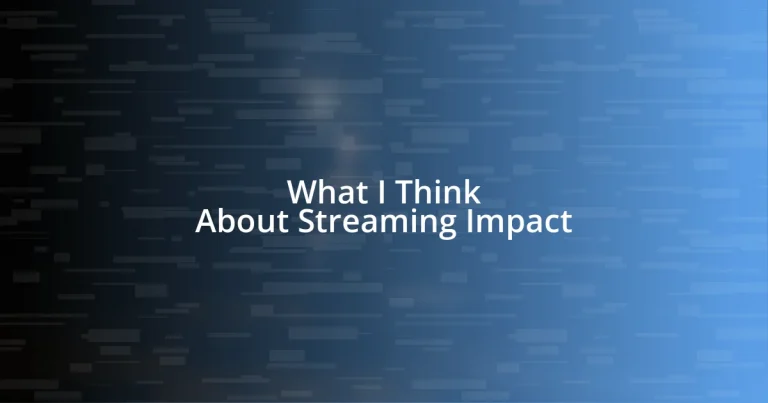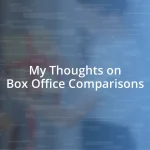Key takeaways:
- Streaming services have revolutionized media consumption by enabling on-demand viewing, influencing both viewer habits and content creation, such as the rise of cliffhangers and diverse narratives.
- Revenue models in streaming, including subscription-based and ad-supported options, provide flexibility and accessibility, catering to diverse consumer preferences and fostering loyalty.
- Streaming platforms promote content diversity, showcasing global stories and underrepresented voices, enriching viewers’ experiences and fostering conversations across different cultures.
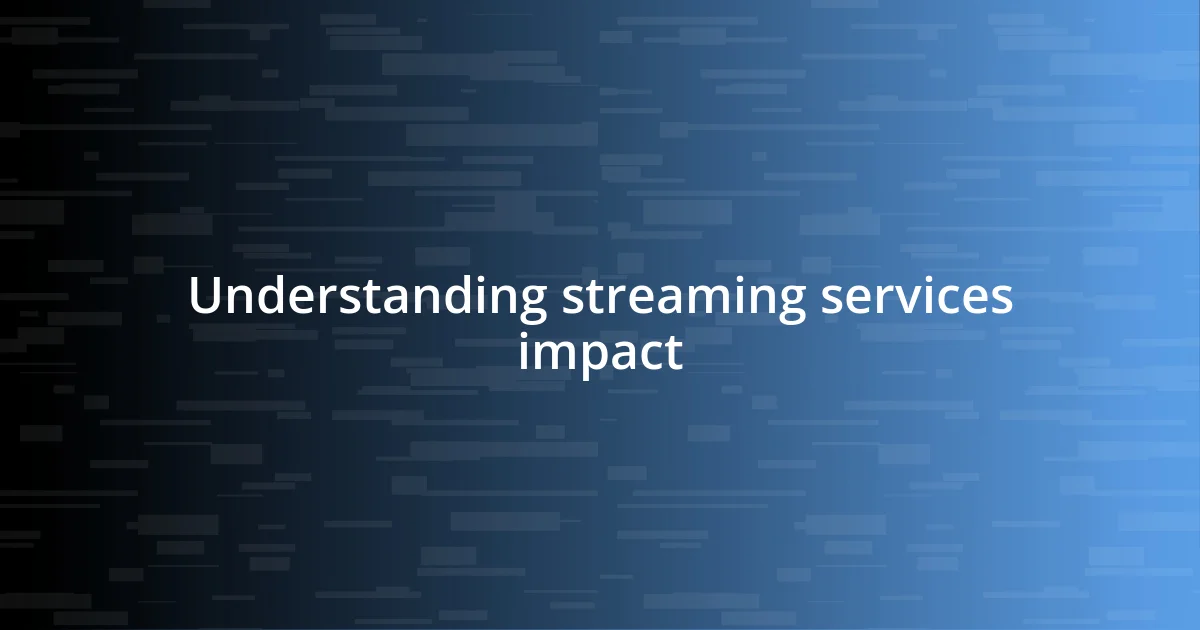
Understanding streaming services impact
Streaming services have fundamentally transformed how we consume media. I remember the first time I binge-watched an entire series in a weekend – it felt revolutionary! This shift to on-demand viewing has changed not just our viewing habits, but also how content creators approach storytelling. Have you noticed how shows now often feature cliffhangers or binge-worthy arcs specifically tailored for streaming audiences?
Moreover, the impact on traditional media is quite profound. With streaming platforms offering an overwhelming array of choices, I often find myself overwhelmed by options. This phenomenon has caused cable TV to adapt and create its own on-demand features. Isn’t it fascinating how competition drives innovation? It’s a captivating cycle that’s reshaping our entertainment landscape daily.
On a sociocultural level, these services also influence the types of stories being told. I’ve noticed more diverse narratives emerging, with voices from previously underrepresented communities gaining a platform. Isn’t it exciting to see characters and stories that reflect a broader spectrum of human experience? Streaming isn’t just a change in how we watch; it’s reshaping our collective narrative and expanding our understanding of various cultures.
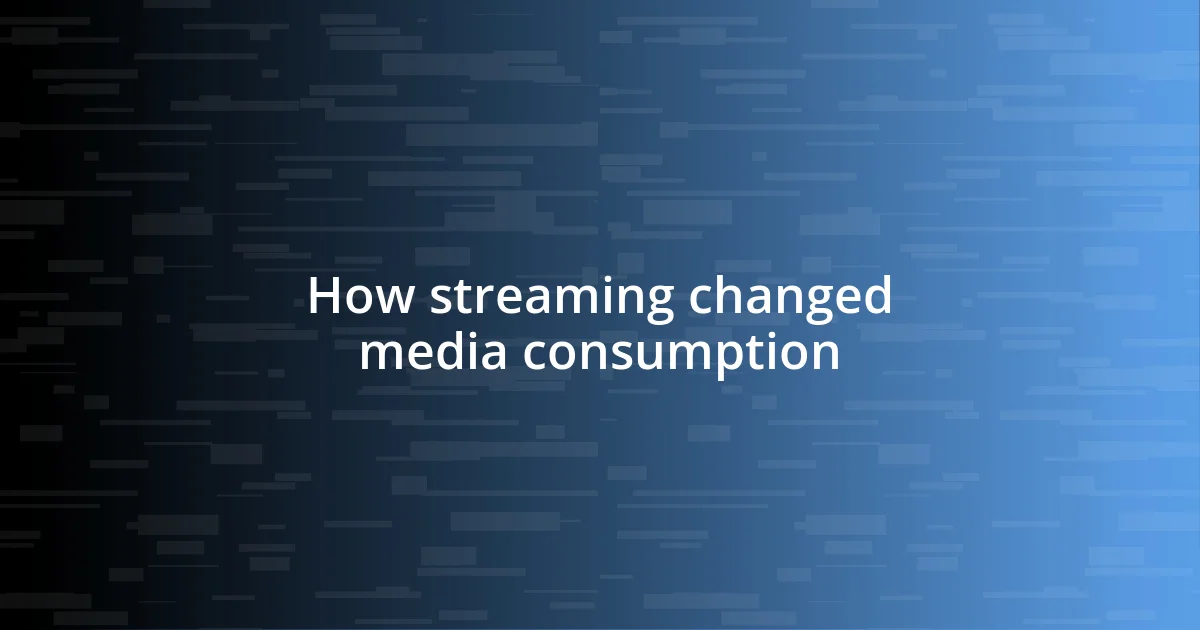
How streaming changed media consumption
The shift to streaming has completely altered the landscape of media consumption for many of us. I find it fascinating how my evenings have transformed; instead of waiting a week for a new episode, I can now binge-watch an entire season in one sitting. This on-demand nature has cultivated not just a new type of viewer but a whole new relationship with content, where we feel empowered to dictate our own viewing schedules.
Here are some key ways streaming has changed our media habits:
– Instant access to a vast library of content has made viewers more selective.
– The decline in traditional viewing schedules means we focus on convenience rather than appointment-based watching.
– Social viewing experiences have shifted; I often find myself discussing plot twists with friends as we all stream separately.
– The prevalence of algorithms personalizes recommendations, which can sometimes feel eerily accurate!
– Content is now accessible on various devices, allowing for a seamless transition from watching at home to on-the-go.
Streaming really has ushered in a new era of personal, flexible, and diverse media consumption, which I genuinely appreciate.
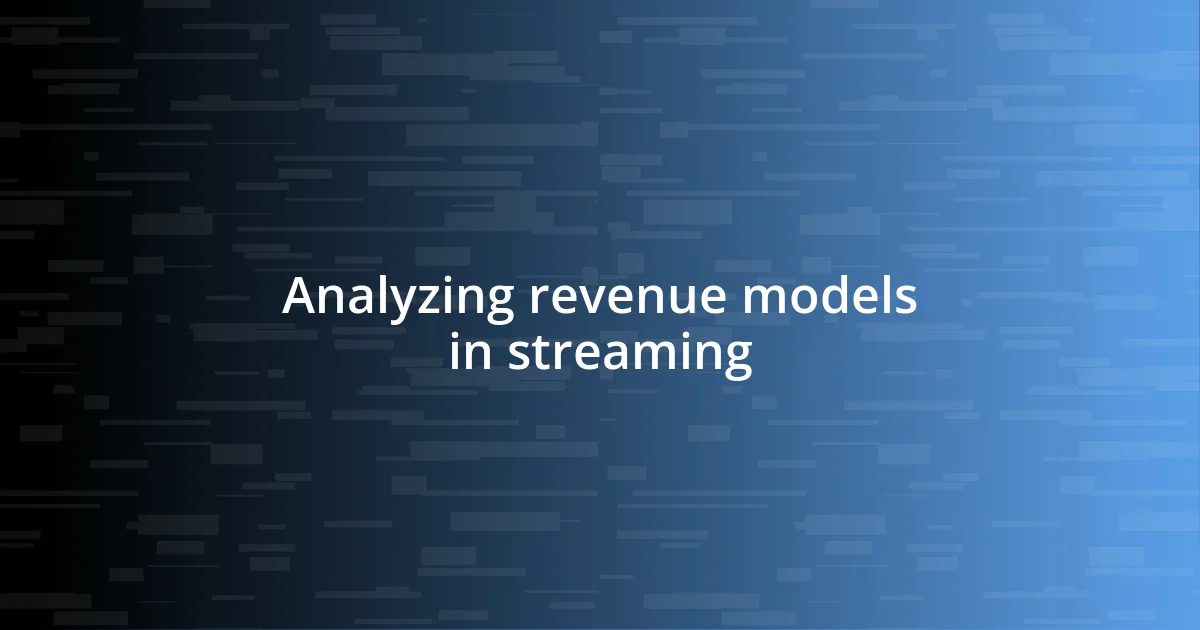
Analyzing revenue models in streaming
Analyzing the revenue models in streaming reveals a landscape bustling with innovative strategies. I often reflect on how subscription-based models, like those used by Netflix and Disney+, foster unwavering customer loyalty while providing steady cash flow. In my experience, having that flat fee can make it easier for audiences to access a wealth of content without the constant worry of pay-per-view charges. Doesn’t that sense of freedom enhance our viewing experience?
In addition to subscriptions, ad-supported streaming services are gaining traction. I’ve noticed platforms like Hulu and Peacock successfully leveraging ads to deliver free or lower-cost content to viewers who don’t mind brief commercial interruptions. This model appeals to budget-conscious consumers, and it’s fascinating how it keeps things accessible for everyone. Have you ever tried watching a show on these platforms and found yourself pleasantly surprised by the quality despite the ads?
When comparing traditional content monetization methods to these innovative streaming revenue models, it’s clear that flexibility and choice play leading roles today. Audiences are no longer confined by rigid structures; they now tailor their consumption to what suits them best. Just recently, I switched from cable to streaming services, and I felt liberated exploring different pricing and package options – it truly highlighted how diverse these models can be.
| Revenue Model | Description |
|---|---|
| Subscription-based | Flat fee for access to a library of content (e.g., Netflix, Disney+) |
| Ad-supported | Free or low-cost access with ad interruptions (e.g., Hulu, Peacock) |
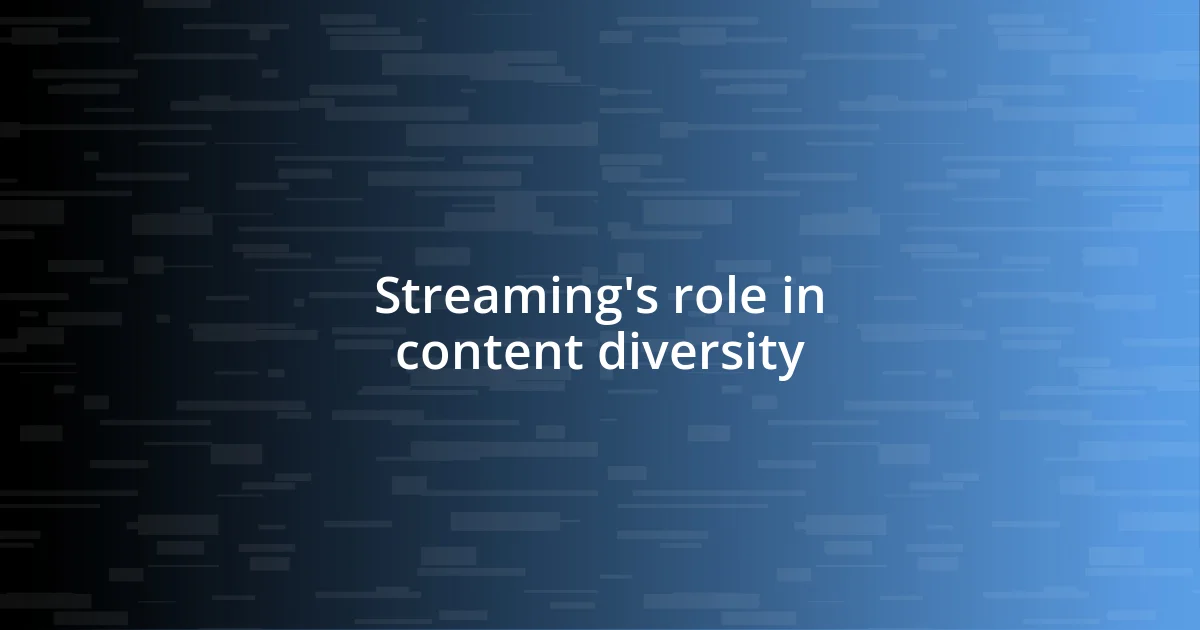
Streaming’s role in content diversity
Streaming services have significantly broadened the scope of content available, showcasing stories from diverse cultures and perspectives. I remember watching a gripping series from South Korea that I’d never have discovered through traditional cable. It not only enriched my viewing experience but also made me appreciate narratives from around the world. Doesn’t it feel great to see stories that reflect different realities?
What intrigues me even more is how streaming platforms prioritize original content that reflects underrepresented voices. I’ve seen shows that highlight LGBTQ+ experiences or focus on issues facing marginalized communities. This variety fuels conversations and connections among viewers, which I find essential in today’s globalized world. Have you ever found yourself discussing a show’s themes with someone who has a completely different background? It’s a powerful reminder of how diverse storytelling can unite us.
With algorithms suggesting content based on our viewing preferences, I often stumble upon hidden gems that might not get mainstream attention. Just the other night, I discovered an indie film that resonated deeply with me, something I likely wouldn’t have found without the personalized recommendations. How remarkable is it that streaming allows us not just to consume content but to explore and celebrate diversity in storytelling?
